Imagine a garden that awakens with the setting sun, where blooms unfurl in the moonlight, filling the night air with intoxicating fragrances and mysterious beauty. Whether you’re just starting your gardening journey or have years of experience under your belt, night-blooming plants offer a magical addition to your indoor garden that delights the senses and adds a touch of the extraordinary to your home.
For both beginners and seasoned green thumbs, this guide provides a carefully curated list of night-blooming indoor plants that are as rewarding to grow as they are captivating. You’ll discover practical tips to ensure your night garden thrives, transforming your evenings with nature’s enchanting show and offering a serene escape from the day’s hustle and bustle.
With these plants, you’ll not only enjoy the visual splendor and soothing aromas but also experience the satisfaction of nurturing something truly special. Dive into the world of night blooms with confidence, knowing you’ll be well-equipped to cultivate a thriving indoor garden that brings joy and tranquility to your nighttime routine.
Plant in Well-Drained Soil
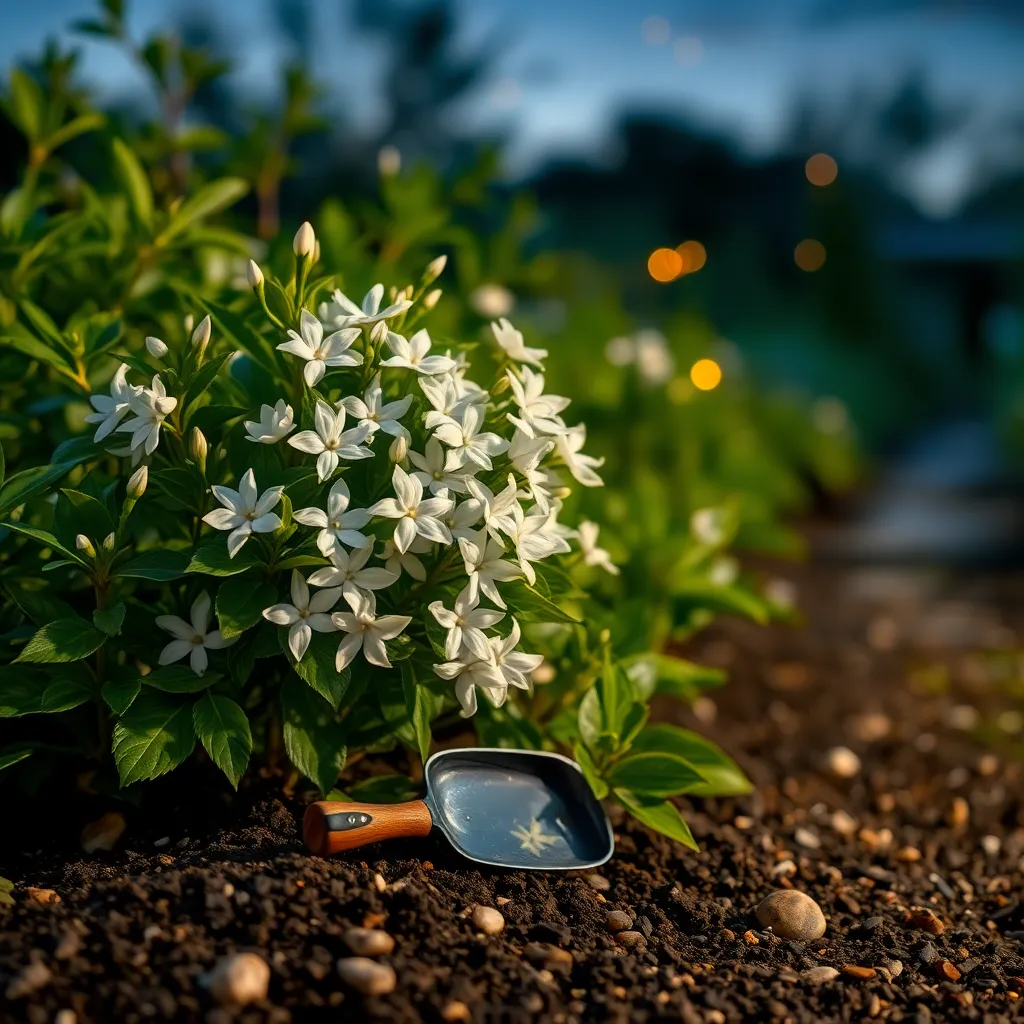
To ensure the success of your night blooming plants, planting in well-drained soil is crucial. This type of soil prevents waterlogging, which can lead to root rot and other plant diseases.
Choose a soil mix that contains equal parts of peat moss, perlite, and garden soil to enhance drainage. For gardeners in humid climates, adding extra perlite or coarse sand can improve soil aeration further.
When planting, consider elevating your garden beds to improve drainage naturally. Raised beds not only offer better drainage but also allow for easier access to your plants, which can be especially beneficial when caring for night bloomers.
Water your night blooming plants sparingly, allowing the top inch of soil to dry out between waterings. This watering technique ensures that the roots receive enough moisture without sitting in soggy soil.
Choose Fragrant Night Bloomers
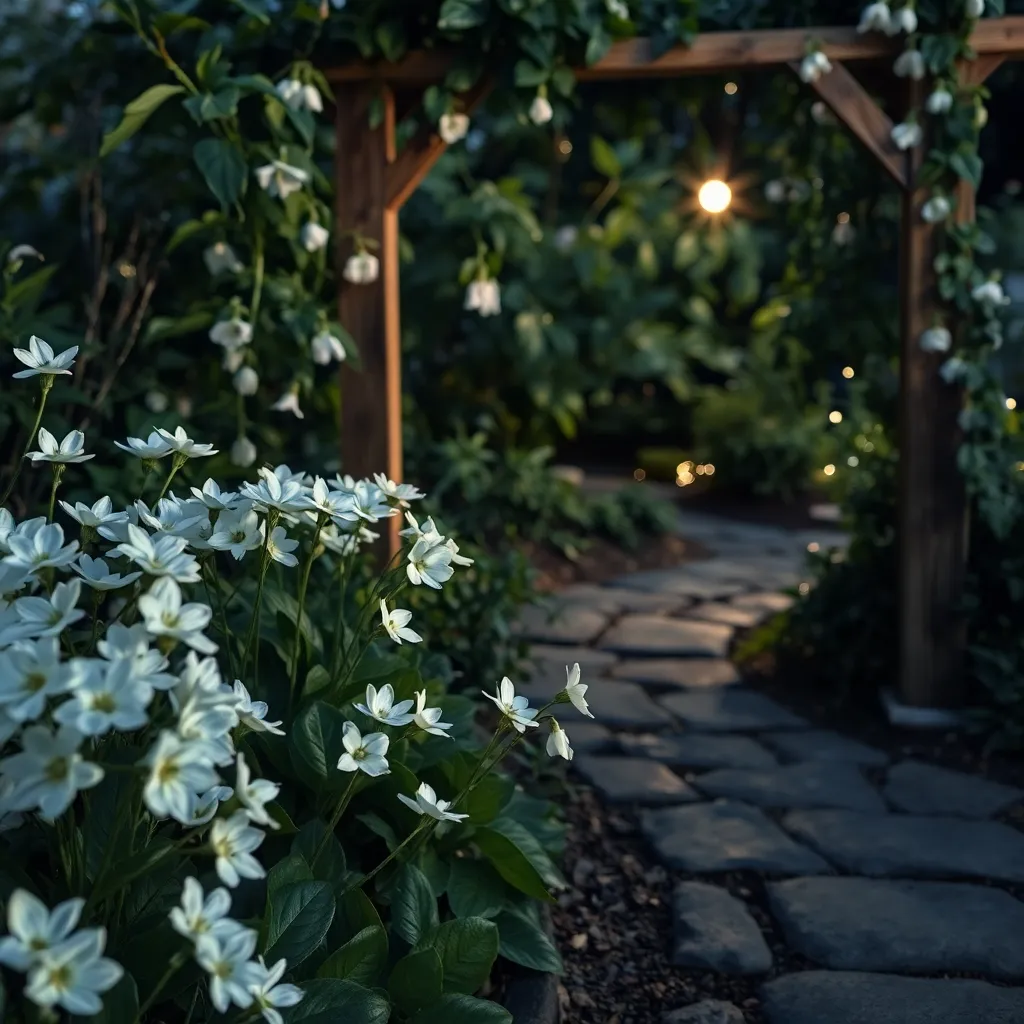
When choosing fragrant night bloomers, consider planting jasmine varieties, like night-blooming jasmine (Cestrum nocturnum), known for their intense scent. These plants thrive in well-drained, fertile soil and require regular watering, especially in dry periods.
Another excellent choice is the moonflower (Ipomoea alba), which unfurls its large, white blooms as the sun sets, releasing a sweet fragrance. Moonflowers prefer full sun during the day and benefit from a support structure, such as a trellis, to climb.
For those looking for a low-maintenance option, consider the four o’clock plant (Mirabilis jalapa), which opens in the late afternoon and provides a delightful lemony scent. It adapts well to various soil types but performs best in loamy soil with moderate watering needs.
Finally, the night phlox (Zaluzianskya capensis) offers a vanilla-like fragrance and is an excellent choice for container gardening. Ensure it receives full to partial sunlight and water consistently to keep the soil evenly moist, encouraging prolific blooming.
Water in Early Evenings
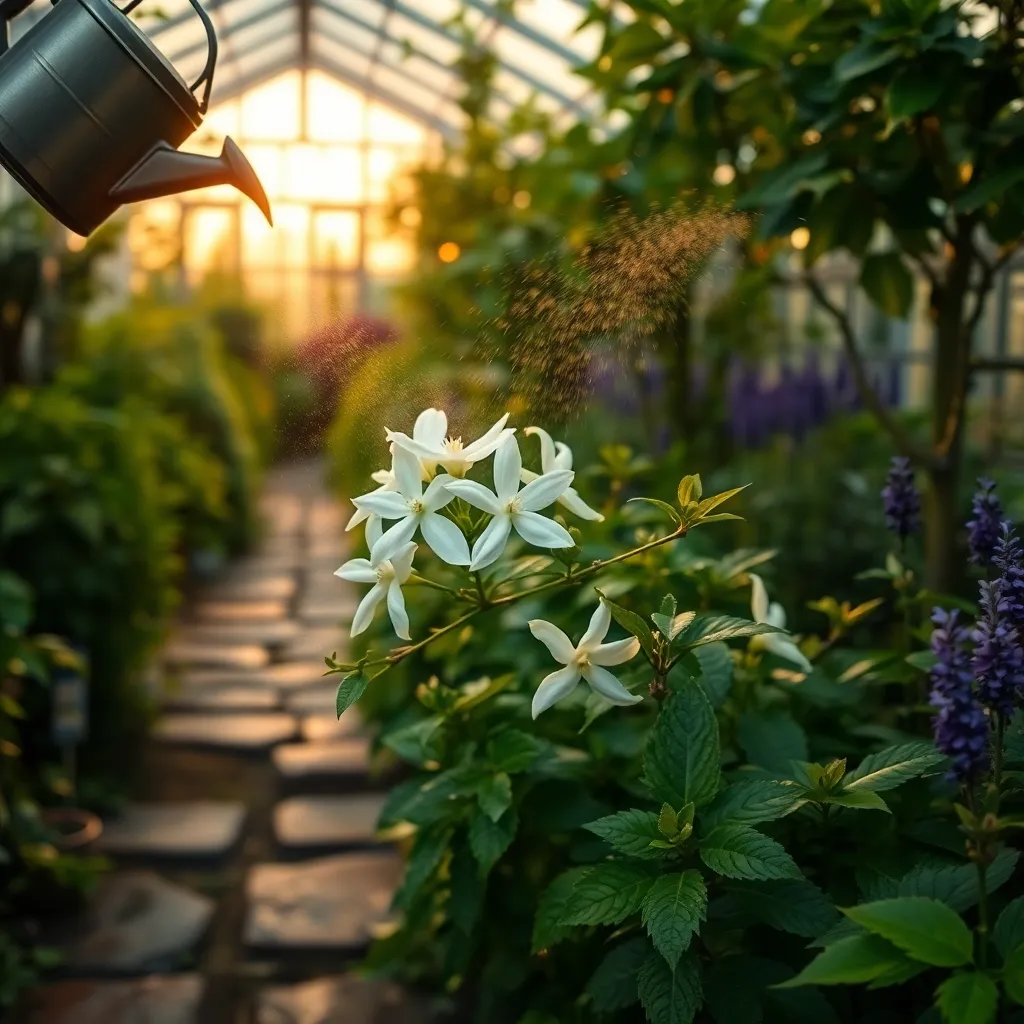
Watering your night-blooming plants in the early evening can significantly enhance their growth and flowering. This timing allows the roots to absorb moisture before the cooler nighttime temperatures set in, reducing evaporation and ensuring your plants have adequate hydration.
Make sure to use a soaker hose or drip irrigation system to deliver water directly to the roots where it’s needed most. This method minimizes water waste and helps prevent diseases that can occur when foliage remains wet overnight.
For those new to gardening, a simple rule of thumb is to provide about one inch of water per week, adjusting for rainfall. More experienced gardeners might consider testing the soil moisture with a moisture meter to fine-tune their watering schedule and ensure optimal conditions for their plants.
It’s also crucial to consider the soil type in your garden. Sandy soils drain quickly and may require more frequent watering, while clay soils retain moisture longer, allowing for a less frequent watering schedule. Adjust your watering practices accordingly to meet the specific needs of your soil and plants.
Use Reflective Mulch for Light
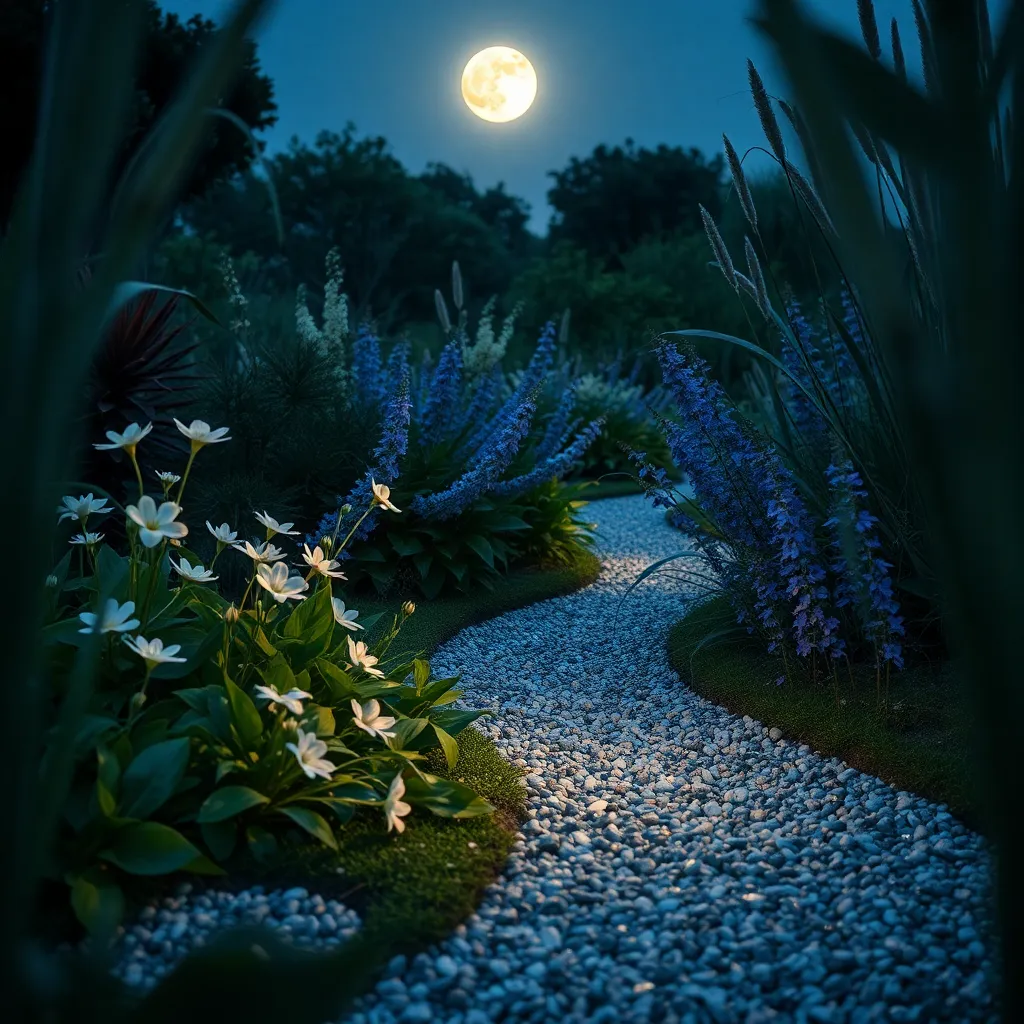
Reflective mulch can be a powerful tool for enhancing the light conditions for night blooming plants. By using materials like aluminum foil, silver plastic, or even old CDs, you can increase the amount of light reflected onto your plants, effectively extending their exposure to light during dusk.
It’s important to place the reflective mulch around the base of your plants, ensuring it covers the soil while leaving space for watering. This technique not only boosts light but also helps retain moisture and regulate soil temperature, creating optimal growing conditions.
Consider using reflective mulch especially if your night bloomers are planted in shaded areas. Enhancing the light can stimulate more robust blooming and improve the overall health of the plant.
While this method works wonders for many night bloomers, be mindful that some plants might not respond well to the additional light exposure. Always observe your plants for any signs of stress and adjust the placement of the mulch accordingly.
Attract Pollinators with Moonflowers
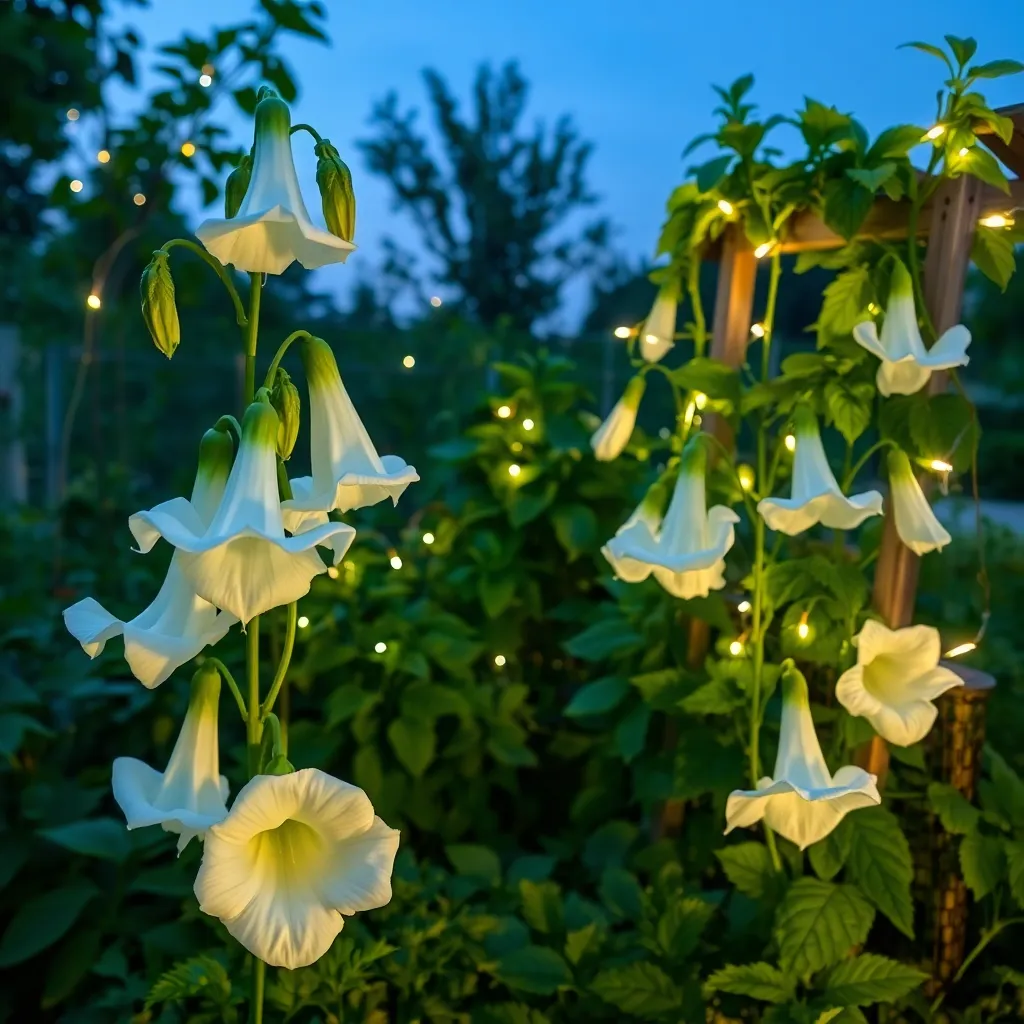
Moonflowers are a fantastic choice for attracting nighttime pollinators like moths to your garden. These enchanting blooms open in the evening, releasing a sweet fragrance that draws in beneficial insects.
To grow moonflowers successfully, plant them in well-drained soil that receives full sun during the day. They thrive in USDA hardiness zones 10 to 11 but can also be grown as annuals in cooler climates.
Water moonflowers regularly, especially during dry spells, to keep the soil consistently moist but not waterlogged. Adding a layer of mulch can help retain soil moisture and provide a stable environment for the roots.
For best results, provide a trellis or fence for the vines to climb, as moonflowers can reach heights of 10 to 15 feet. This not only supports their growth but also enhances their visibility to nighttime pollinators.
Conclusion: Growing Success with These Plants
In nurturing night-blooming plants, we’ve explored five key relationship concepts: patience, adaptability, understanding, communication, and consistency. Just as these plants thrive in their unique conditions, so too can your relationships flourish when you embrace these principles. Patience allows love to grow at its own pace, adaptability helps partners navigate life’s changes together, understanding fosters empathy, communication ensures both voices are heard, and consistency builds trust over time.
Your actionable next step is simple yet powerful: pick one of these concepts and consciously integrate it into your daily interactions. Whether it’s listening more attentively or being more patient during challenging times, your efforts will begin to blossom.
We encourage you to bookmark this article to revisit these insights whenever you need a reminder or a boost. As you cultivate these skills, you’ll be laying a foundation for a thriving, resilient relationship. Remember, the seeds of successful relationships are planted through intentional actions and consistent care. By saving this guide, you’re taking a proactive step toward enriching your connections and ensuring that your relationships continue to bloom beautifully in the future.

